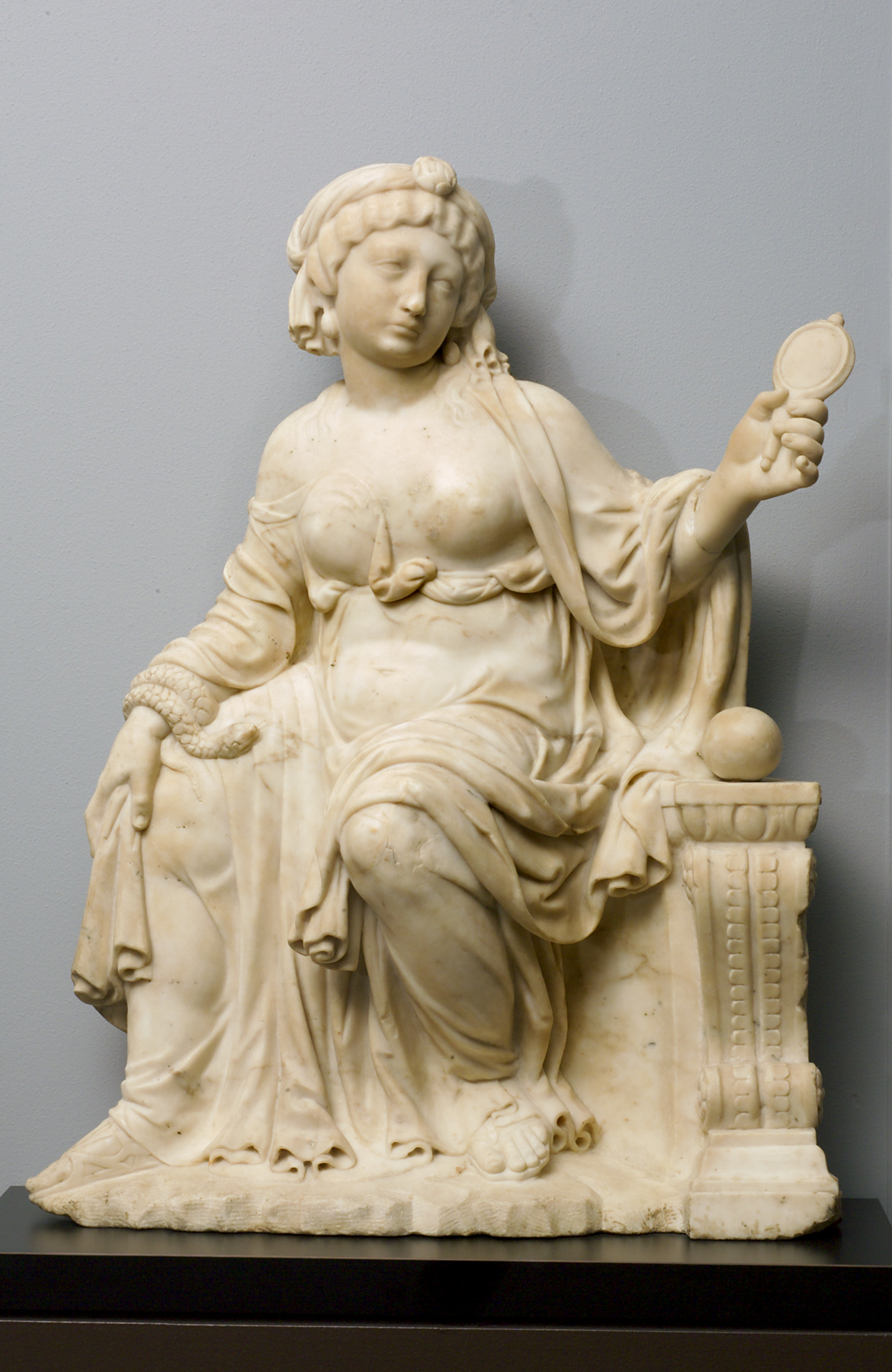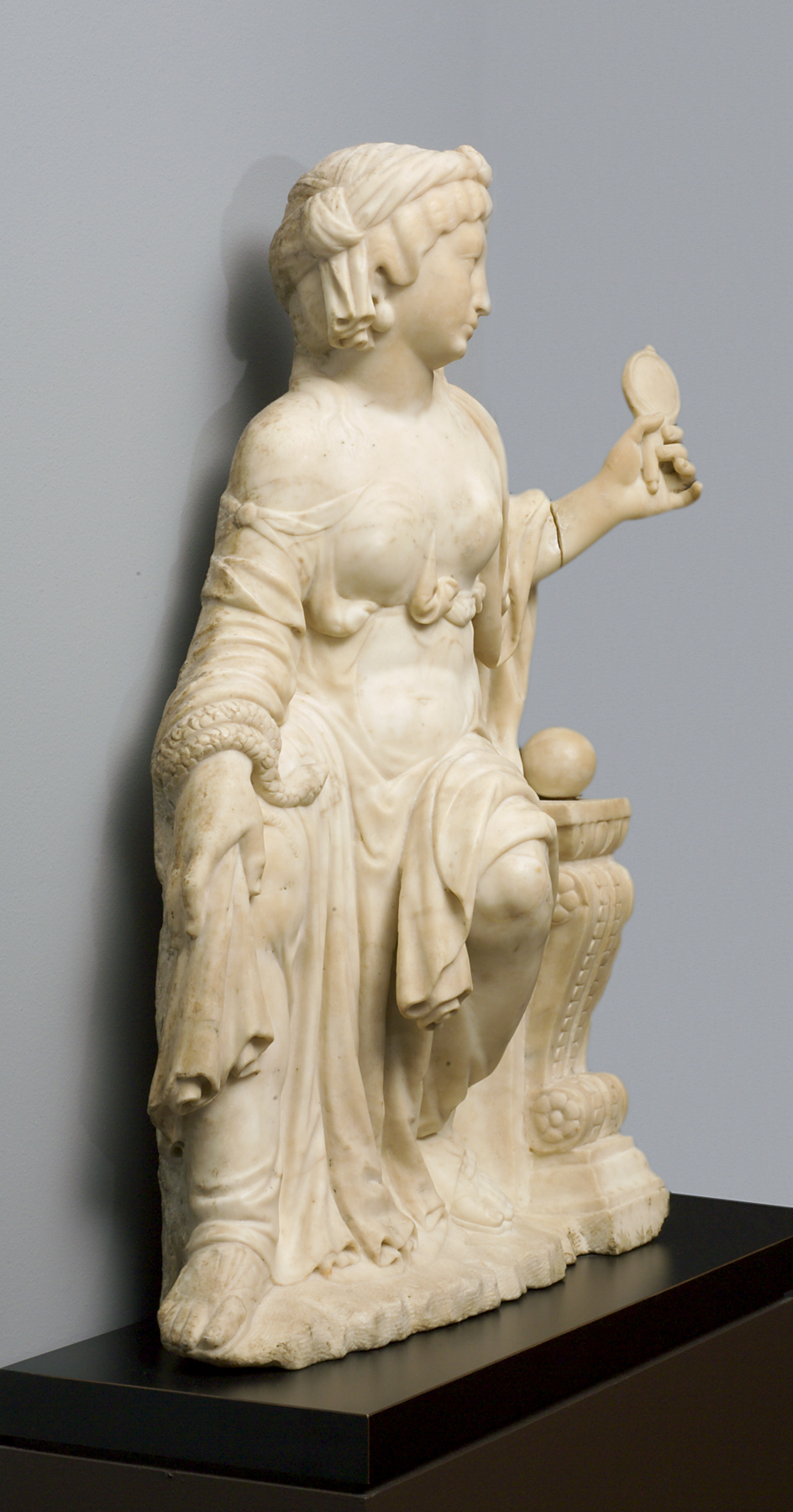Prudence, Cesare Quaranta
Artwork Overview
Cesare Quaranta, artist
active circa 1513–1539
Prudence,
circa 1513–1515
Where object was made: Italy
Material/technique: marble
Dimensions:
Object Height/Width (Height x Width): 61 x 76 cm
Object Height/Width (Height x Width): 24 x 29 15/16 in
Object Height/Width (Height x Width): 61 x 76 cm
Object Height/Width (Height x Width): 24 x 29 15/16 in
Credit line: Museum purchase: Elizabeth M. Watkins Fund
Accession number: 1965.0015
Not on display
If you wish to reproduce this image, please submit an image request





